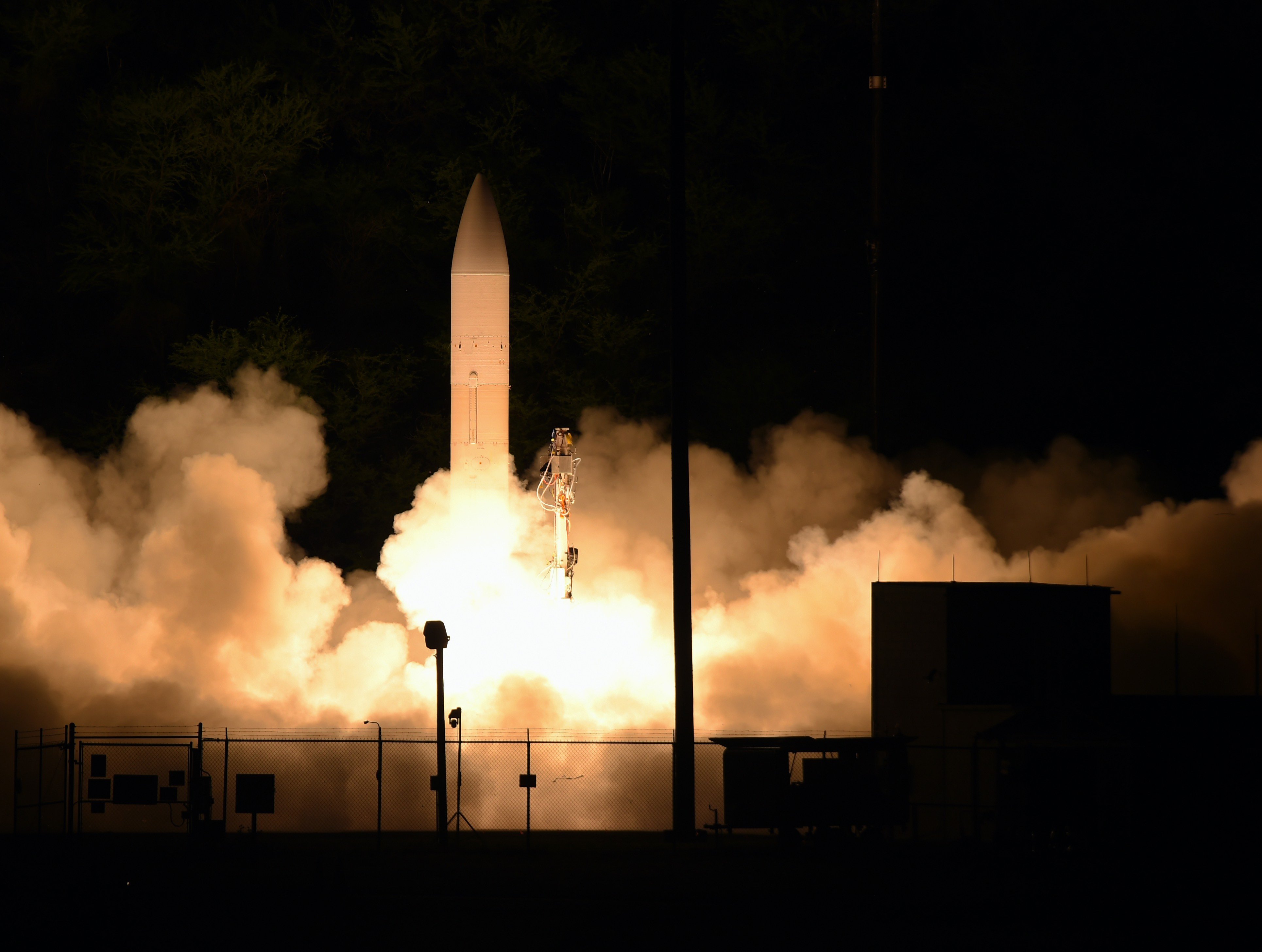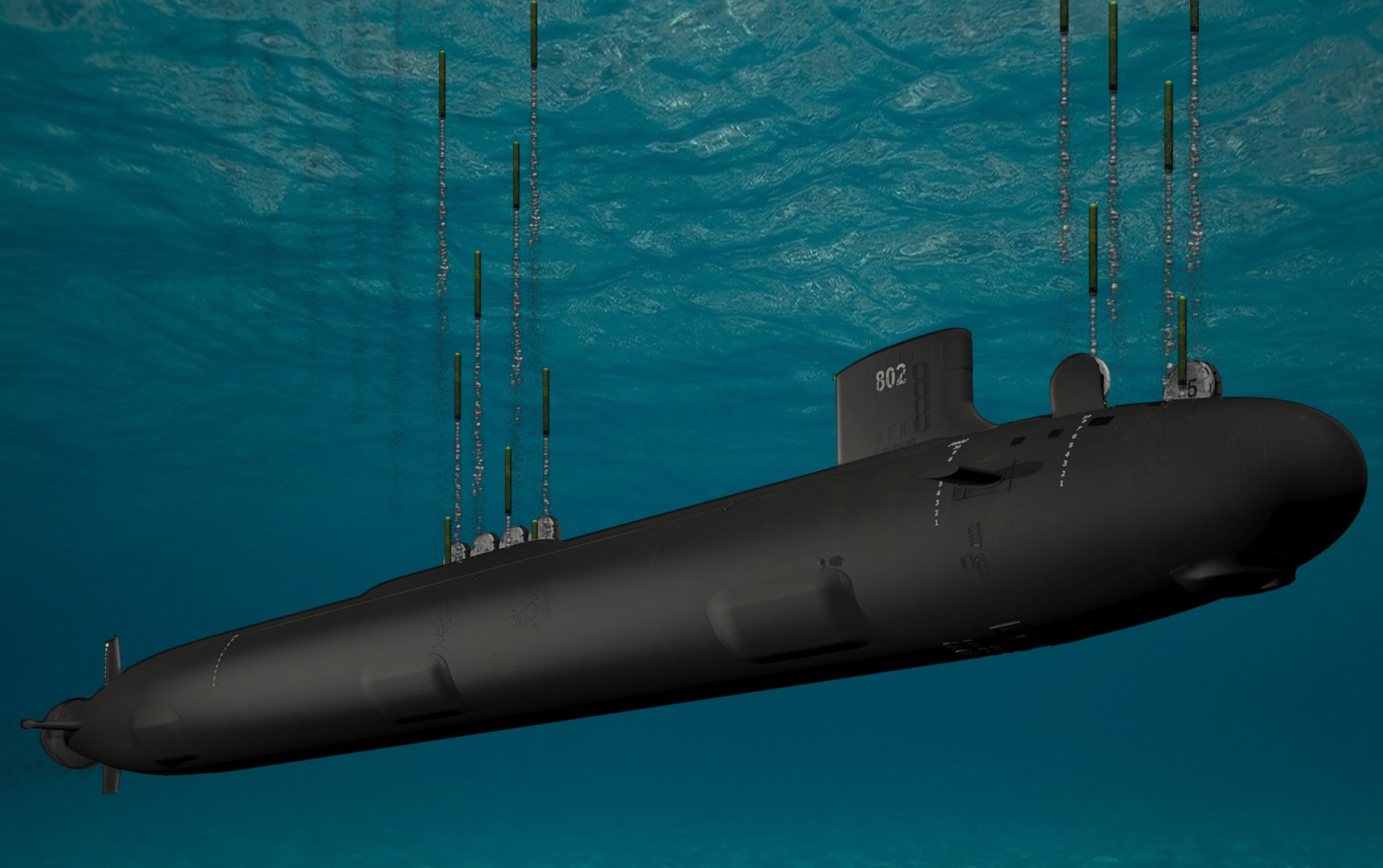
The template for a new generation of Army and Navy weapons was put to the test in a late Thursday missile launch in Hawaii.
A prototype of the joint common hypersonic glide body (C-HGB) rode a modified Polaris A3 booster from a launch pad at the Pacific Missile Range Facility, Kauai. The successful test ended with the glide body landing at an undisclosed distance from the launch site, officials said.
“This test builds on the success we had with Flight Experiment 1 in October 2017, in which our C-HGB achieved sustained hypersonic glide at our target distances,” said Vice Adm. Johnny Wolfe, the Navy’s director of Strategic Systems Programs. “Today we validated our design and are now ready to move to the next phase towards fielding a hypersonic strike capability.”
The joint program is developing the common glide body that will house a conventional warhead and guidance system. This system will be the heart of the Army and Navy’s developing prompt global strike capability that will allow the U.S. to strike anywhere in the world within an hour.
“Hypersonic weapons, capable of flying at speeds greater than five times the speed of sound (Mach 5), are highly maneuverable and operate at varying altitudes,” read a statement on the test. “This provides the warfighter with an ability to strike targets hundreds and even thousands of miles away, in a matter of minutes, to defeat a wide range of high-value targets.”
The Navy has taken the responsibility of designing the glide body and the Army is leading the production of the weapons.
In August, the Army awarded Dynetics Technical Solutions a $351.6 million other transaction authority contract to produce the glide bodies.
The Navy earmarked $1 billion in the Fiscal Year 2021 budget request for research and development for a conventional prompt strike capability and targeted the Virginia-class submarine as the first platform to launch the weapon.

“The Navy’s CPS program will design a missile comprised of a Common Hypersonic Glide Body (C-HGB) and a 34.5-inch two-stage booster,” read the budget documents.
“The program is pursuing an [initial operational capability] of F.Y. 2028 in which the missile will be fielded on a Virginia class submarine with Virginia Payload Module.”
While the Army and Navy are using the same glide body, the Navy is developing its own booster for the weapon.
“From a Navy perspective, we’re developing the booster that our hypersonic glide body will go on, and we’re doing it though in such a way that we’re taking the most stringent requirement – which is underwater launch – and so as we develop it we will do it in such a way that as the bigger Navy comes through what platform or platforms they actually want to deploy this on, the launcher and the glide body will be able to survive any of those environments,” Wolfe said in 2018.





